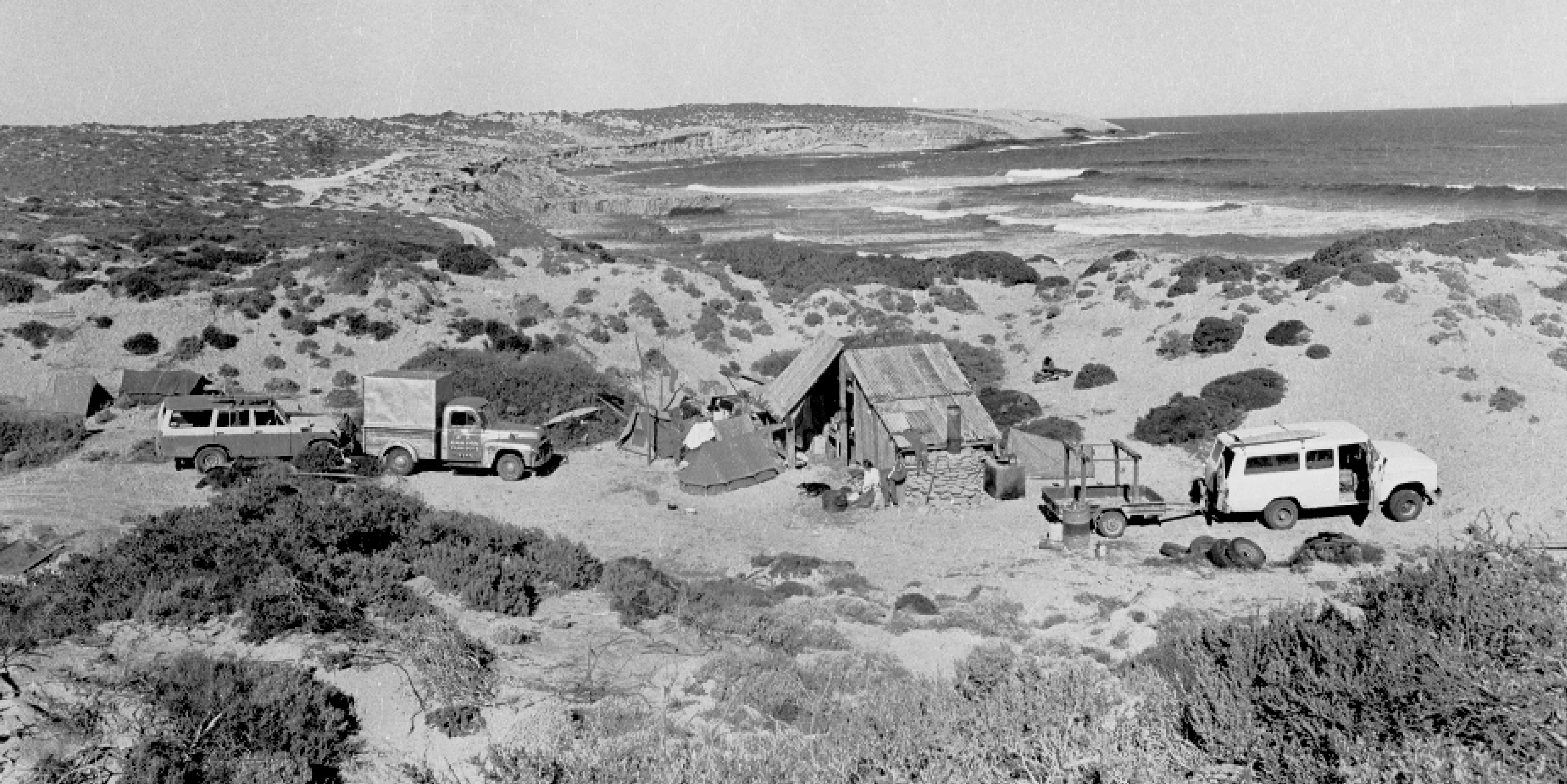ROLLING WITH RENO
Hawaiian royalty meets the Yalata mob
The movie was more social commentary than surf film… and largely fell through the cracks of surf history as a result. Paul Witzig’s Rolling Home took a group of young people around Australia, surfing on the fringes of society. It starred flashy Hawaiian, Reno Abellira, and was filmed by Paul’s friend, Robbi Luscombe Newman. This is how they remember it.
ROBBI LUSCOMBE NEWMAN
“It wasn’t really a surf film so much. Paul came up with this idea to do a movie called Rolling Home, which was like Evolution meets the Leyland Brothers. Paul was heavily influenced by Bruce Brown and loved the idea of the surfers as adventurers. There was a very tribal feel to this movie. Paul wanted to capture all these different cultures around the fringes of Australia, and Reno was the central character. Paul said, ‘Let’s go around Australia,’ which was very simpatico with me, so I jumped on the chance to take a year off and shoot for it. This was 1972.
“We drove straight across to Cactus. Paul owned the land at Cactus at this point I think, but there was no camp. We stayed there for… a long time. I couldn’t tell you exactly. Months. Reno had his Californian wife, Joanne with him and they were both lovely, if a little out of place. They were both very well dressed, and here we were living in tents in the desert. We built a house while we were there. Paul was an architect and went, ‘Let’s go and build something.’ We built it out of recycled timber and whatever else we could find.
“The surf pumped. We scored, there’s no doubt about it. Reno had a lot of good surf at both Castles and Caves, and I shot water footage. Not much of it made the final edit though. We didn’t give sharks a second thought but probably should have.
“When there was no surf we did a lot of dune bashing and exploring along the coastal tracks. We used to drive up onto the sand hills at night, turn the lights off and listen to Pink Floyd and just trip out. Out there under the night sky it feels like you’re on the edge of space.
“The other thing we did was visit the Aboriginal mission at Yalata. That’s where Reno excelled. He was so great with the kids. He totally loved it. We did a couple of trips with them hunting kangaroos. They killed a kangaroo one time, stuffed it with all sorts of leaves, and threw it straight on the open fire. The tail was the prize bit. Reno was fantastic with them. For a Hawaiian it must have been otherworldly, you know what I mean? To be a Hawaiian with that whole Polynesian heritage and then to come here to the desert with these people who were just the earth, personified.
“But that was the point of the film I think. To see these different groups, from Aboriginal towns to hippie communes to the crew in the Penong Hotel. It was a movie before it’s time because the reviews weren’t good. I think people just wanted more surfing. The remoteness got too much for Reno and Joanne in the end and they eventually bailed home to Hawaii.”

RENO ABELLIRA
“One of the trips I did in Australia was for a movie called Rolling Home with Paul Witzig. This was 1972; I was 22. It was ten young people – including me and my future ex-wife – and we travelled around Australia for it. The basis of the movie was young people leaving the city life to get into the country hinterland and connect with the First Peoples. Part of the movie’s mission was to try and relate to Aboriginal people on that level.
“I got a really good immersion in Australia, because everywhere we went we dropped into the local mission, and while we got good receptions, sometimes we wouldn’t because in some of them there was corruption in the system and some people looked at us with suspicion.
“We stayed at Cactus for two-and-a-half months. We built this rough house and we all camped around it. It was so raw. It wasn’t very Hollywood. We had to go into Penong to go get Coopers Ale, water, and to take a bath. We got some waves and luckily never saw any sharks. But it was wild. Every three or four days we’d get blasted. We were in the Great Australian Bight and we’d get all these southerlies blowing through. At the time my hair was down to my shoulders and I kinda looked like a girl. I remember going into this pub in Penong with my wife, and some of the old diggers there are going, ‘That’s straight up an Aboriginal girl!’ and my wife was so offended. They were drunk and they honestly thought I was a young Aboriginal girl and they were going to have their way with me. My wife lost it. I didn’t have the moustache at this time.
“We went everywhere. We followed the coast all the way from Victoria across the desert to Margaret River, then we took a flight to the Northern Territory and the crocodile farms and cashew plantations, then we went to Alice Springs then across to Queensland. By the time we got to Queensland I was over it. With all that desert, once we got to the Queensland coast with all that warm water I was never happier.”
